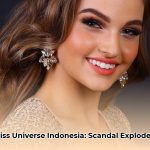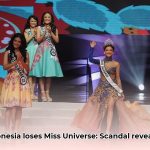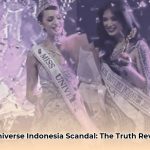Ever wondered about the Indonesian beauty pageant industry’s trajectory? It’s rapidly evolving! From shifting beauty perceptions to modernized pageant operations, the landscape is transforming. This article dissects these changes, highlighting opportunities, challenges, and strategies for success in this dynamic industry. We’ll explore beauty standard evolution, a guide to measuring social media ROI, and the economic impact of Indonesian pageants. For example, the recent Miss Universe Indonesia controversy highlights evolving standards. Ready to navigate Indonesia’s digital pageant era and leave your mark? Let’s get started!
Impact on Beauty Pageant Industry in Indonesia
Indonesia’s beauty pageant industry is experiencing significant growth. In 2024, the country hosted over 122 pageants, fueled by technological advancements and evolving beauty ideals. This digital transformation profoundly impacts all industry aspects, from contestant recruitment to audience engagement. How do trends in pageant types, such as online-only versus traditional, correlate with audience engagement, sponsorship revenue, and overall economic impact?
The Digital Revolution: Pageants Go Global
Indonesian pageants are transcending local boundaries and captivating a global audience through online platforms, transitioning into online spectacles. Social media has become integral, facilitating contestant recruitment, event promotion, and fan engagement. A contestant’s success hinges significantly on their online presence and social media proficiency, with many developing personal brands as influencers. According to a Kompasiana report, Instagram is now the primary portal for pageant recruitment and promotion in Indonesia.
Influencers wield considerable influence, amplifying contestant popularity and attracting brand sponsorships, resulting in increased revenue streams for pageants. This shift transforms local events into extensive online marketing opportunities. Recent industry data indicates that pageants engaging influencers experienced up to a 40% increase in sponsorship revenue, alongside a significant boost in audience reach.
Redefining Beauty: More Than Just Looks
The definition of “beautiful” in Indonesia is undergoing a profound shift. While physical appearance remains relevant, talent, social responsibility, and a compelling personal brand are gaining prominence. Leading pageants evaluate contestants holistically, considering their skills, personality, and presentation, reflecting a broader cultural movement towards valuing inner qualities.
This evolution is reshaping contestant preparation and sponsor engagement. Astri Dewi, Head of Marketing at Loreal Indonesia, stated, “We’re seeing a move towards contestants with a genuine passion for social causes and a demonstrated commitment to making a difference in their communities.” This holistic approach is resonating with audiences and sponsors alike.
The Money Matters: An Expanding Economic Force
Indonesia’s beauty pageant industry has a significant and expanding economic impact. The proliferation of competitions and substantial online presence indicates considerable economic activity. Local beauty brands benefit immensely, adapting their products to align with evolving beauty standards and seizing new marketing and collaboration opportunities. The industry contributes to job creation, revenue generation, and the promotion of tourism.
Navigating the Future: Challenges and Opportunities Abound
Rapid growth presents challenges, including ethical concerns and the need for robust guidelines and oversight. Maintaining a positive reputation and ensuring financial stability are crucial for long-term success, particularly for smaller pageants. Competition for sponsorships and media attention is also intensifying.
Organizers need a robust digital strategy, sponsors must optimize digital marketing efforts, the Indonesian government should foster ethical growth and promote the industry’s positive contributions. Contestants must master digital self-promotion and navigate the online landscape responsibly.
A Roadmap to Success: Actionable Steps for Everyone
Here’s a strategic breakdown for key stakeholders:
- Pageant Organizers: Elevate digital presence and online engagement, develop ethical guidelines, explore diverse revenue streams (e.g., merchandise, online courses), and strengthen contestant support networks.
- Sponsors: Employ targeted digital marketing strategies, track campaign results meticulously, foster enduring partnerships with pageants and contestants, and explore inventive collaborations aligned with social causes.
- Contestants: Cultivate a powerful and authentic online brand, master digital marketing techniques, engage in meaningful social activism, and strategize for post-pageant endeavors, including career and entrepreneurial opportunities.
- Beauty Brands: Adapt product offerings to evolving beauty standards, embrace sustainable practices, collaborate with influencers and contestants, and integrate advanced digital technologies (e.g., AI-powered personalized recommendations).
- Government (Tourism): Leverage pageants to promote Indonesian tourism internationally, create supportive policies to foster growth and sustainability, mitigate potential risks through regulatory frameworks, and uphold ethical conduct within the industry.
The Bottom Line: A Thriving, Dynamic Industry
Indonesia’s beauty pageant industry is an evolving reflection of societal and technological shifts. Success arises from understanding digital technology, changing cultural norms, and economic forces. Careful planning, ethical conduct, and continuous monitoring of digital trends are essential. Further studies regarding the precise long-term effects and economic impacts are warranted. The industry is expected to continue to evolve, offering both challenges and opportunities for stakeholders.
How to Measure ROI of Social Media Marketing for Indonesian Beauty Pageants
Key Takeaways:
- Defining clear, measurable goals is crucial for effective social media marketing.
- Tracking key performance indicators (KPIs) beyond vanity metrics is essential.
- Utilizing analytics tools provides valuable data for informed decision-making.
- Understanding attribution models helps in accurately assigning credit for conversions.
- The Indonesian context requires careful consideration of cultural nuances and platform preferences.
Defining Your Goals: More Than Just Likes and Shares
Before delving into how to measure ROI of social media marketing for Indonesian beauty pageants, a strong foundation is needed. Establishing specific, measurable, achievable, relevant, and time-bound (SMART) goals is critical. Without clear objectives, how can you possibly determine if social media efforts are yielding results? Common SMART goals for beauty pageants in Indonesia include increasing ticket sales, securing sponsorships, enhancing brand awareness, and driving website traffic.
Choosing the Right KPIs: Beyond Vanity Metrics
Select relevant KPIs beyond vanity metrics like likes and shares. Focus on KPIs tied to specific goals such as increased ticket sales, secured sponsorships, website traffic, lead generation, and media coverage. These are the main indicators of your success. For example, track the number of sponsorship inquiries received through social media or the number of media mentions generated by a campaign.
Leveraging Analytics Tools: Data is Your Friend
Utilize analytic tools like Google Analytics, Socialinsider, Hootsuite Analytics, and specialized social media analytics platforms to track your progress. These tools provide comprehensive data on audience engagement, campaign performance, website referrals, and competitor analysis. The choice of tool depends on the specific metrics needed and the budget available. Consider tools that offer features tailored to the Indonesian market.
Attribution Models: Giving Credit Where Credit is Due
A multi-touch attribution model, which factors in every interaction from initial awareness to final conversion, provides a holistic view. A customer’s journey involves multiple interactions across platforms. The challenge lies in assigning value to each touchpoint. Accurately measuring the value of each touchpoint, including the first interaction, requires sophisticated analytics and a deep understanding of customer behavior. Consider using data-driven attribution models that leverage machine learning to assign credit based on actual customer journeys.
Navigating the Indonesian Context: Cultural Nuances and Platform Preferences
A tailored approach is necessary because Indonesia has a diverse population and social media landscape. Platforms like TikTok, Instagram, and YouTube are very popular. Cultural sensitivities and the preferences of the target audience are crucial, as is the use of Bahasa Indonesia in your content. Adapting your strategy to these individual characteristics is critical for maximizing your returns. Marketers should prioritize culturally relevant content and partner with local influencers who understand the nuances of the Indonesian market.
Example: A Hypothetical Indonesian Beauty Pageant
Suppose a pageant aims to increase ticket sales through social media. The SMART goal might be: “Increase ticket sales by 20% in three months through targeted Instagram and TikTok campaigns”. KPIs could include website traffic from social media, ticket sales directly tied to social media campaigns (using unique promotional codes), engagement metrics specific to promotional posts (likes, shares, comments, saves), and the cost per acquisition (CPA) of a ticket sale. By tracking these KPIs using analytics tools, ROI can be calculated, and strategy adjusted.
Measuring ROI: The Formula and its Challenges
The basic return on investment (ROI) formula ((Returns – Costs) / Costs x 100%) is utilized, although the “Returns” can be hard to calculate in the context of a beauty pageant. It is complex to quantify brand awareness or fostering relationships with sponsors. While non-financial returns can be challenging to evaluate, they are critical to assess success. Develop a system for assigning monetary value to non-financial returns, such as increased brand awareness (using surveys or brand lift studies) or enhanced sponsor relationships (based on the potential value of future sponsorships).
[1] Social Insider Blog. How to Measure Social Media ROI. https://www.socialinsider.io/blog/social-media-roi/
Indonesian Pageant Industry: Evolving Standards & Economic Impact
Key Takeaways:
- Indonesian beauty standards reflect a complex mix of tradition, colonial influence, and modern media trends.
- The lucrative skin-whitening industry significantly impacts the economy and women’s self-perception.
- A growing movement challenges these norms, promoting body positivity and diverse beauty ideals.
- The Indonesian Pageant Industry plays a key role in shaping perceptions, and its standards are evolving.
- The economic impact of the industry extends beyond pageants, influencing related sectors.
The Shifting Sands of Beauty: Tradition and Transformation
Indonesia’s beauty standards are
















